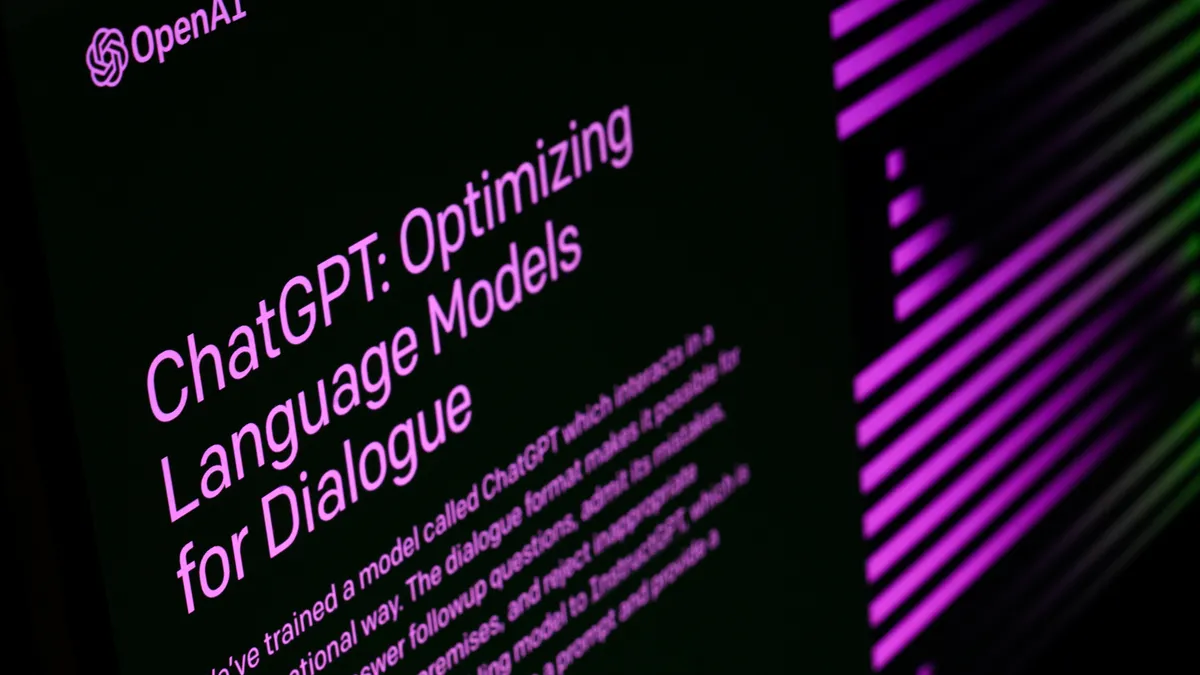Dive Brief:
- OpenAI released GPT-4, the latest iteration of the generative AI technology behind the ChatGPT tool, on a limited basis, the Microsoft-backed company announced Tuesday.
- GPT-4 is a large multimodal language model that expands beyond the capabilities of its predecessor, GPT-3, in text processing and adds visual recognition capabilities, according to an OpenAI research report.
- While the image processing capability remains in research preview and is not available to the public, enterprise developers can apply for access to GPT-4. ChatGPT Plus subscribers have limited access with a usage cap.
Dive Insight:
The viral spread of ChatGPT following its November release presaged the promise and the perils of generative AI for the enterprise.
OpenAI and other innovators in the generative AI space have been upgrading the technology in an effort to deliver a more reliable, less problematic product capable of moving beyond consumer curiosity to meet rigorous enterprise demands.
Morgan Stanley’s wealth management division is leveraging GPT-4 to power an inward-facing application for analysts, the firm announced Tuesday. The chatbot mines company data and documentation for insights to answer queries in ChatGPT’s conversational format.
The company is considering an additional application that would ingest notes from financial advisors to enhance client follow-ups, the announcement said.
Implementing ChatGPT or similar products was an action item for nearly one-third of the 105 senior banking executives surveyed for a February research report from analyst firm Gartner, although half said they have no current plans for generative AI.
GPT-4’s multimodal large language model “represents a significant increase in the breadth of uses and problems that it can attempt to solve,” Rowan Curran, analyst at Forrester, said via email.
However, Curran tempered expectations. “The announcement of GPT-4 and its integration to ChatGPT Plus isn’t a game changer and doesn’t have an immediate impact for enterprise users,” Curran said.
Limiting inappropriate responses, including the social biases and incorrect yet plausible “hallucinations” current generative AI models have produced, are priorities, OpenAI said. To meet enterprise requirements, engineers will also have to mitigate GPT’s vulnerability to malicious code and adversarial prompts.
Testing internal business applications is progressing. In a move similar to Morgan Stanley’s strategy, PwC will use generative AI to generate insights for its legal team, the company announced Wednesday.
PwC’s legal business solutions division turned to Harvey, a startup supported by an OpenAI-backed incubator fund launched in December, for a natural language processing application built on ChatGPT technology.
As OpenAI incorporates image processing into its model, potential enterprise applications will emerge.
“This ability to connect language and visual images in a single model opens up many more use cases for visual search, customer support and troubleshooting, learning and education, research, software development, land management and more,” Curran said.
OpenAI, which is backed by Microsoft, faces competition in the generative AI space. Google introduced two new cloud-based generative AI features for enterprise customers Tuesday, and Amazon announced a partnership with natural language processing developer Hugging Face in February.













